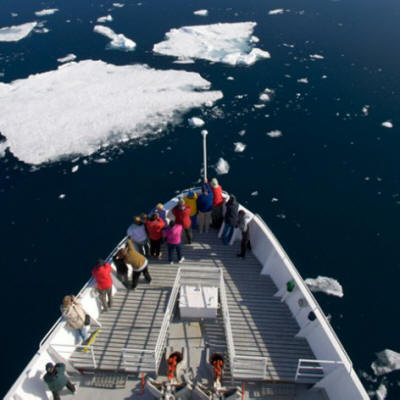|
2013 extracted from 'Global Risks Report 2013' from Reports.Weforum Website
X Factors
In this section, developed in collaboration with
Nature, a leading science
journal, the Risk Response Network asks readers to look beyond our
high-risk concerns of the moment to consider a set of five X factors
and reflect on what countries or companies should be doing to anticipate
them.
Looking forward and identifying emerging issues
will help us to anticipate future challenges and adopt a more proactive
approach, rather than being caught by surprise and forced into a fully
reactive mode.
They capture broad and vaguely understood issues that could be hatching grounds for potential future risks (or opportunities).
X Factors: Runaway Climate Change
But have we passed the point of no return? What
if we have already triggered a runaway chain reaction that is rapidly
tipping Earth’s atmosphere into an inhospitable state?
So can the varying concentration in the Earth’s
atmosphere of heat-trapping molecules such as carbon dioxide, to which we
have been adding through greenhouse gas emissions.
They have the potential to amplify climate change to a point of fundamentally disrupting the global system.
The much debated questions are where these
tipping points lie, how soon they might be reached, whether they can be
predicted - and what will happen when they are crossed.3
Their melting reveals the darker land and water surfaces below, which absorb more solar heat. More absorption then causes yet more melting and warming, and so forth, in a self-reinforcing feedback loop.
The unprecedented thawing of 97% of Greenland’s
surface ice in July 2012, for example, has led to a darkening of Greenland’s
ice cap, meaning that it will begin to absorb higher levels of solar energy
and melt faster still.
But if the several kilometer-thick ice sheets
that cover Greenland and Antarctica dwindle, they may not so easily reappear
in a cooler world. New ice would have to form at low elevations, where
temperatures are higher.
A warmer atmosphere can hold more water. As the
average air temperature soars in response to our burning of fossil fuels,
evaporation and atmospheric concentration of water vapor will increase,
further intensifying the greenhouse effect. On Venus, this probably caused a
runaway greenhouse effect, which boiled away the oceans that may have
existed in the planet’s early history.
Even so, scientists with the Intergovernmental
Panel on Climate Change (IPCC) assert that the water vapor feedback
on Earth could be strong enough to double the greenhouse effect due to the
added carbon dioxide alone.
Significant Cognitive
Enhancement X Factors: Significant Cognitive Enhancement
Scientists are working hard to develop the medicines and therapies needed to heal mental illnesses such as Alzheimer’s and schizophrenia.
Although progress has been slow, it is conceivable that in the not too distant future researchers will identify compounds that improve existing cognitive pharmaceutical enhancers (e.g. Ritalin, modafinil).
Although they will be prescribed for significant
neurological disease, effective new compounds which appear to enhance
intelligence or cognition are sure to be used off-label by healthy people
looking for an edge at work or school.
Cochlear implants are already standard treatment
for the deaf, and motor implants for controlling neural prosthetics and
devices are developing fast and will likely become more widely available in
coming years. Retinal implants for the blind are a bit further behind, but
the field is booming and it seems likely that they will be worked out soon.
But it seems conceivable that within 10 years
either we will have a new method for recording brain activity or the
non-invasive signals will be decoded more efficiently. Direct brain
interfaces of devices and sensors within our lifetimes are not out of the
question, opening a new realm of enhanced neurobiology for those who can
afford it.
There is, in addition, a significant risk of cognitive enhancement going very wrong.
Cognitive enhancement pharmaceuticals work by targeting particular neurotransmitter systems, and, therefore, will most likely have a wide-ranging action. There is a significant possibility of unintended effects on other systems - for example, drugs to enhance learning may lead to a greater willingness to take risks; drugs to enhance working memory may lead to increased impulsive behavior.
Recent research suggests that, in addition to
boosting memory, TMS could be used to manipulate a person’s beliefs of right
versus wrong or to suspend moral judgment altogether. It could also be used
to “erase” memory and deliberately cause permanent brain damage without the
use of invasive procedure or blunt force trauma.
It is not difficult to see how such drugs could find applications in armed forces and law enforcement contexts, or conversely by criminal organizations and terrorist groups.
They could spark an arms race in the neural
enhancement of combat troops.5
Rogue Deployment of
Geoengineering
X Factors: Rogue Deploying of Geoengineering
But what if this technology were to be hijacked
by a rogue state or individual?
The basic idea is that small particles could be injected high into the stratosphere (chemtrails) to block some of the incoming solar energy and reflect it back into space, much as severe volcanic eruptions have done in the past.
In stark contrast to decades of technological
evolution and political disputes about overhauling energy infrastructure to
reduce greenhouse emissions, solar radiation management would act quickly
and would be cheap to implement - though side-effects may make it a very
expensive option.
In theory, the technology would be tantamount to a planetary thermostat, giving humans direct control over global temperature.
The direct impact of dimming the sun would be
felt within weeks to months.
The problem is that incoming solar radiation
drives the entire climate system, so reducing sunlight would fundamentally
alter the way energy and water move around the planet. Almost any change in
weather and climate patterns is likely to create winners and losers, but
determining causation and quantifying impacts on any given region or country
would be a huge challenge.
Beginning with the United Kingdom’s Royal
Society, many academic and policy bodies have called for cautious research
as well as broader conversation about the implications of such technologies.
The global climate could, in effect, be hijacked
by a rogue country or even a wealthy individual, with unpredictable costs to
agriculture, infrastructure and global stability.
Much research has gone into whether a program
could be targeted at the Arctic, for instance, where the impacts of global
warming are being felt the most, but some researchers suggest that the
impacts could quickly migrate from the Arctic to other regions. Many say
that a true test of solar radiation management would have to be global.
But overall, despite calls for more coordinated government science programs, the funding landscape for this kind of science remains spotty. This leaves a gap for unregulated experimentation by rogue parties.
For example, an island state threatened with rising sea levels may decide it has nothing to lose, or well-funded individuals with good intentions may take matters into their own hands. There are signs that this is already starting to occur. In July 2012, an American businessman sparked controversy when he dumped about 100 tonnes of iron sulphate into the Pacific Ocean off the west coast of Canada in a scheme to spawn an artificial plankton bloom.
The plankton absorbs carbon dioxide and may then
sink to the ocean bed, removing the carbon - another type of geoengineering,
known as
ocean fertilization. Satellite images
confirm that his actions succeeded in producing an artificial plankton bloom
as large as 10,000 square kilometers.
Observers are concerned that this may be a sign of what is to come.8
Costs of Living Longer X Factors: Costs of Living Longer
Are we setting up a future society that must
struggle to cope with a mass of arthritic, demented and, above all,
expensive elderly who are in need of long-term care and palliative
solutions?
But these advancements may also enhance
risks. Consider the impact on society of a growing number of elderly infirm
who are protected from the most common causes of death today, but with an
ever deteriorating quality of life, as other ailments that do not kill, but
seriously disable, start to dominate.
Similar rises are projected for many countries, with the global population of the demented expected to double every 20 years until it exceeds 115 million in 2050.10
A key driver will be increasing elderly
populations and potentially declining fertility rates in low- and
middle-income countries.
The United Kingdom, for instance, spends nearly as much each year caring for the demented (£23 billion) as it does on strokes (£5 billion), heart disease (£8 billion) and cancer (£12 billion) combined.11
And the numbers afflicted with all of these
maladies are only going to grow.
Assuming no policy changes - for instance, no increase in the age of eligibility - the program’s outlays are expected to exceed its taxpayer-funded income by more than US$ 24 trillion over the next 75 years.12 liii
The spending trend is not limited to government support, either. In the United States, the cumulative total of public and private consumption by the elderly has ballooned in the last half-century.
The burden is accentuated in rapidly ageing
countries such as Germany, where the ratio of effective producers per
consumer is projected to decline nearly 25% by 2030.13
Thus, a new wave of disabled seniors may be on the way. The proportion of Americans aged 50 to 64 who reported needing help with personal care activities - such as getting into and out of bed and climbing 10 steps - increased significantly in the decade ending in 2007.
Arthritis was the top cause and diabetes played a prominent and growing
role.15
There are well-known but difficult-to-implement preventive measures that could help us live longer and to have better quality of lives: paramount among them is exercise, with its near-universal benefits for our physiologies and for warding off pathology.16
Obvious ways to mitigate cost implications would include raising the eligibility ages for the programs that support the elderly from the public purse - retirement income, social support services or reduced-cost health care - and raising the retirement age, requiring older adults to be productive economically for longer.
One recent analysis, using a “delayed ageing”
model, found that hundreds of billions of dollars in increased costs to the
US Medicare and Social Security programs could be entirely offset by raising
the eligibility ages for Medicare and Social Security by a few years (from
65 to 68, and from 67 to 68).17
More research is needed to turn chronic
conditions to acute conditions (i.e. by developing curative treatments), and
to find solutions that increase the capacity of all citizens to manage
chronic conditions and to create wealth at the same time.
X Factors: Discovery of Alien Life
What would be the effects on science funding flows and humanity’s self-image? It was only in 1995 that we first found evidence that other stars also have planets orbiting them.
Now thousands of “exoplanets” revolving around distant stars have been detected.
NASA’s Kepler mission to identify Earth-sized planets located in the “Goldilocks zone” (not too hot, not too cold) of sun-like stars has been operating for only three years and has already turned up thousands of candidates, including one the size of Earth.
The fact that Kepler has found so many planet
candidates in such a tiny fraction of the sky suggests that there are
countless Earth-like planets orbiting sun-like stars in our galaxy. In 10
years’ time we may have evidence not only that Earth is not unique but also
that life exists elsewhere in the universe.
Money might well start flowing for new
telescopes to study these living worlds in detail, both from the ground and
from space. New funding and new brain power might be attracted to the
challenges of human space flight and the technologies necessary for
humanity, or its artificial-intelligence emissaries, to survive an
inter-stellar crossing.
But it would not change the world immediately. Alien life has been supposedly discovered before, after all. Around the turn of the 20th century, the US astronomer Percival Lowell convinced many people (including himself) that Mars was crisscrossed by a vast system of canals built by a dying civilization.
But the belief that humankind was not alone did not do much to usher in an era of goodwill and earthly harmony, nor did it stop the outbreak of World War I in 1914. The discovery’s largest near-term impact would likely be on science itself.
Suppose observations point to a potential future home for humankind around another star, or the existence of life in our solar system - in the Martian poles, in the subsurface oceans of Jupiter’s frozen moon Europa, or even in the hydrocarbon lakes of Saturn’s moon Titan.
Scientists will immediately start pushing for
robotic and even human missions to study the life forms in situ - and
funding agencies, caught up in the excitement, might be willing to listen.
Discovery of
an
Earth 2.0 or life beyond our planet might inspire new generations
of space entrepreneurs to meet the challenge of taking human exploration of
the galaxy from the realm of fiction to fact.
The discovery of even simple life would fuel
speculation about the existence of other intelligent beings and challenge
many assumptions that underpin human philosophy and religion.
Conclusion
Exogenous in nature, global risks cannot be adequately managed or mitigated by any single organization. We have introduced the conceptual framework of Professors Kaplan and Mikes,1 contrasting “external” risks such as global risks with “preventable” and “strategic” risks, to assist clarity of thought about how global risks should be approached.
Whenever it is difficult to predict how and when
a risk will manifest, nurturing resilience is the preferred approach.
Our three risk cases have discussed what happens,
In the Special Report, we explored the
thinking of systems theorists about how to build resilient systems,
describing how five components – redundancy, robustness, resourcefulness,
response and recovery - can be applied to selected national subsystems.
Specifically, in 2013 we will take forward the task of building a trusted network of risk experts to help global leaders map, mitigate, monitor and enhance resilience to global risks.
And we will work to develop and refine the National Resilience Rating proposed in the Special Report.
The hyper-connected nature of the modern world
makes it increasingly urgent to understand how best to build resilience in
the face of global risks.
|





